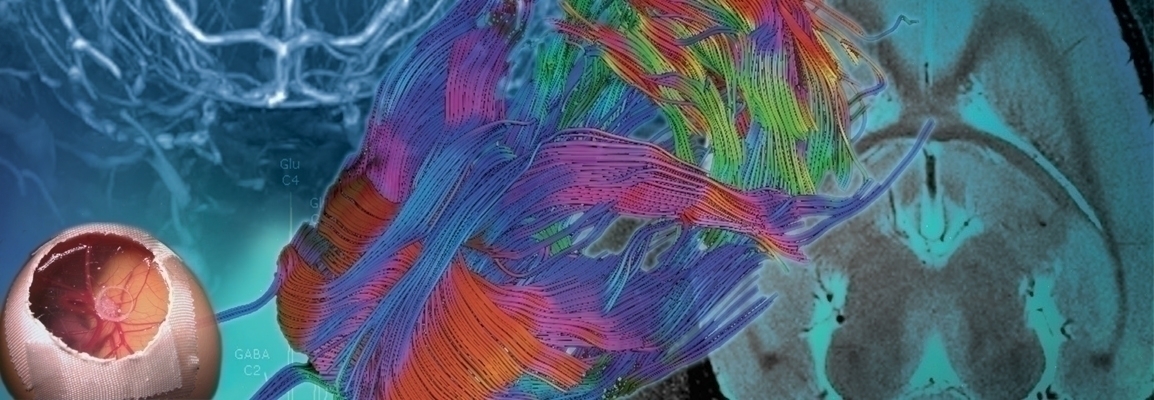

New Insights into Brain Function with Molecular and Functional MRI of the Rodent Brain at Ultra-high Fields
Chemical exchange saturation transfer (CEST) is a molecular imaging technique used in 1H magnetic resonance imaging (MRI) which also has the potential to be used in translational research. CEST exploits the chemical exchange processes that take place between exchangeable protons and surrounding water molecules to quantify low concentration metabolites by highly sensitive detection through the water signal. Very few ultra-high field systems are currently used for CEST imaging.
In this webinar, MR physicist Professor Seong-Gi Kim and market product manager Tim Wokrina from Bruker BioSpin will discuss how CEST imaging significantly benefits from ultra-high fields. Highly resolved metabolic information from CEST experiments can be complemented with functional information from fMRI experiments. For the first time, it is shown that the blood-oxygen-level dependent (BOLD) signal exhibits a supra-linear increase at ultra-high field strengths, enabling new insights into the brain function in rodents.
This webinar took place on December 14th, 2017
What to expect
Increased spectral dispersion at ultra-high fields leads to a high selectivity of magnetization transfer techniques such as Chemical Exchange Saturation Transfer (CEST) imaging. At the same time, higher saturation and a reduction of the exchange rate relative to the chemical shift can be achieved. Kim will demonstrate that the chemical exchange effect for the amine proton signal in rat brain at 15.2 Tesla is massively increased by 65% compared to 9.4 Tesla, offering higher molecular sensitivity and specificity with reduced overlap of background signals.
Previously, simulation studies have shown that the optimum field strength for fMRI studies is in the range of 9.4 Tesla. Here, Kim will present evidence explaining both the feasibility and the impact of using much higher field strength - 15.2 Tesla - for BOLD fMRI in animal research. Kim's data shows a much higher BOLD effect than 9.4T. This enables faster measurements, higher specificity, thereby allowing better correlation with other physiological parameters (e.g. electrophysiological recordings of firing neurons). Kim is currently investigating to use the improved sensitivity to look for associations between genes and brain function, as well as trying to understand cell-type specific neural activities in the whole brain.
Key topics
In this webinar, MR physicist Prof. Seong-Gi Kim and market product manager Tim Wokrina from Bruker BioSpin will discuss:
- How the massive increase of the chemical exchange effect for the amine proton signal by 65% in rat brain at 15.2 Tesla compared to 9.4 Tesla offers higher molecular sensitivity and specificity with reduced overlap of background signals.
- How ultra-high field fMRI significantly increases the sensitivity of blood oxygen level dependent (BOLD) imaging of the rodent brain.
- Prof Kim’s data shows a never seen before high BOLD effect, enabling faster measurements, higher specificity, and allows perfect correlation with other physiological parameters.
- How ultra-high fields will achieve new insights into the function of the brain.
Who should attend
This webinar will appeal to anyone working in the field of preclinical MRI and high- or ultra-high field CEST and MRI research. It may also interest those in the field of basic neuroscience, who may be intrigued by how pre-clinical animal imaging enables a level of sensitivity and specificity that is not possible with humans.
Speakers
Seong-Gi Kim, Ph.D
Director of Neuroscience Imaging Research Center in the Institute for Basic Science (IBS), and Professor of Biomedical Engineering in Sungkyunkwan University (SKKU)
He did his graduate works on in vivo NMR spectroscopy (1984-88) at Washington University, and postdoc training on structural biology at the University of Washington. In 1991, he moved to the Center for Magnetic Resonance Research in the University of Minnesota and involved into the first human fMRI studies in 1992. After advancing his rank to full Professor, he moved to the University of Pittsburgh at 2002. He was appointed as the inaugural Paul C. Lauterbur Chair in Imaging Research at 2009, which was created for honoring a Nobel laureate and MRI inventor. Recently he returned to Korea for setting up a new imaging center. His major research focus is to develop magnetic resonance imaging techniques for measuring brain physiology and function, to determine relationships between neural activity and hemodynamic responses, and to apply imaging tools for answering neuroscience questions.
Dr. Tim Wokrina
Market Product Manager at Bruker BioSpin PreClinical Imaging
Dr. Tim Wokrina joined Bruker in 2007 as an MRI Application Scientist, and later took over Product Management for the ICON, BioSpec, PharmaScan and MRI CryoProbe product lines. Since 2013 he is responsible for the Market Product Management for the preclinical MRI product lines.